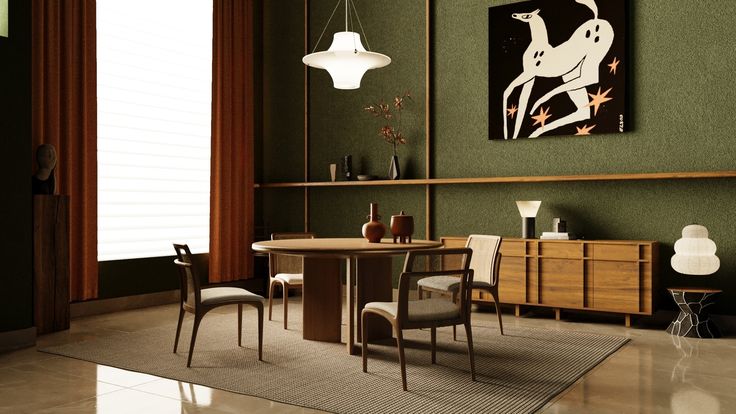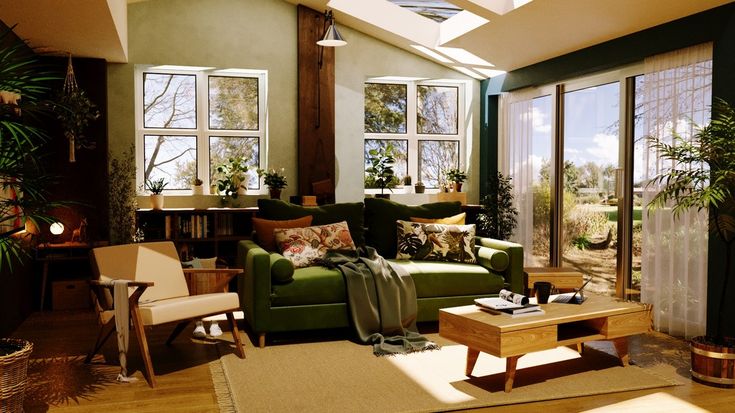Step-by-Step Guide to Designing a Vintage-Style Home
Step-by-Step Guide to Designing a Vintage-Style Home – Designing a vintage-style home is like crafting a nostalgic escape that blends old-world charm with modern comfort. This style offers timeless elegance and character while allowing for creative expression through decor, furniture, and finishes. Whether you want to create a single vintage-inspired room or transform your entire home, this guide will walk you through the process step by step.

Step 1: Define Your Vintage Style
The term “vintage” encompasses a broad range of styles, from mid-century modern to shabby chic to art deco. Start by determining which era or combination of eras resonates most with you. Some popular vintage styles include:
- Victorian: Ornate details, floral patterns, and dark woods.
- 1920s Art Deco: Geometric patterns, metallics, and bold colors.
- 1950s Retro: Pastel hues, chrome finishes, and playful designs.
- Bohemian Vintage: Eclectic mix of textures, colors, and global influences.
Create a mood board using Pinterest, magazines, or personal photos to visualize your preferred vintage aesthetic.
Step 2: Choose a Color Palette
Color plays a pivotal role in vintage design. Select a palette that complements the era you’re emulating. For instance:
- Victorian: Deep jewel tones like emerald green, ruby red, and navy blue.
- Mid-century modern: Earthy hues such as mustard yellow, burnt orange, and olive green.
- 1970s bohemian: Warm tones like terracotta, ochre, and sage.
To tie the look together, use neutral base colors like cream or beige to balance the bolder hues.
Step 3: Invest in Statement Furniture
Vintage-style homes are characterized by unique furniture pieces that serve as focal points. When selecting furniture:
- Look for antiques or replicas from your chosen era. For example, a clawfoot tub for a Victorian bathroom or a tufted leather sofa for a mid-century living room.
- Visit thrift stores, flea markets, and antique shops for authentic finds.
- Opt for high-quality materials like solid wood, wrought iron, or velvet to achieve an authentic vintage feel.
Don’t shy away from mixing old and new—pairing an antique dresser with a modern mirror can add depth and interest to your design.
Step 4: Incorporate Vintage Textiles
Textiles bring warmth and texture to a space, making them a vital component of any vintage-inspired design. Consider:
- Rugs: Persian rugs or kilim designs for a touch of global charm.
- Curtains: Lace or heavy velvet for a Victorian look; sheer, pastel prints for a retro vibe.
- Throws and Cushions: Embroidered, quilted, or crocheted pieces add a cozy and authentic touch.
Layering textiles enhances the vintage aesthetic and creates a lived-in, inviting atmosphere.

Step 5: Add Vintage-Inspired Lighting
Lighting is essential for setting the mood in a vintage-style home. Opt for fixtures that reflect your chosen era:
- Chandeliers for a Victorian or French provincial look.
- Sconces with brass or bronze finishes for an art deco vibe.
- Retro pendants or globe lamps for mid-century modern spaces.
Consider using Edison-style bulbs for a warm, nostalgic glow. Pair them with dimmer switches to enhance ambiance.
Step 6: Focus on Decorative Details
Decorative details are what truly bring a vintage home to life. Pay attention to:
- Wall Art: Vintage posters, botanical prints, or black-and-white photos in ornate frames.
- Mirrors: Gilded or sunburst designs to add depth and light.
- Collectibles: Antique clocks, ceramic figurines, or retro kitchenware displayed on open shelves.
- Books: Stack vintage books with worn spines for a cozy, intellectual touch.
Scour flea markets and estate sales for one-of-a-kind pieces to give your home personality and charm.
Step 7: Embrace Patterns and Wallpaper
Patterns are a hallmark of vintage design. Incorporate them through wallpaper, upholstery, or decor:
- Floral prints for a Victorian or shabby chic look.
- Geometric designs for art deco or mid-century modern spaces.
- Paisley or damask for bohemian or eclectic vibes.
Wallpaper can transform a room—consider using it as an accent on one wall or in unexpected places, such as the inside of a cabinet.
Step 8: Upgrade Hardware and Fixtures
Small details like doorknobs, drawer pulls, and faucets can significantly impact the overall vintage aesthetic. Choose finishes that match your era:
- Crystal or porcelain knobs for a classic Victorian feel.
- Brass or chrome handles for mid-century or art deco styles.
- Copper or matte black finishes for rustic or industrial-inspired vintage looks.
These subtle upgrades are affordable and easy to implement, making a big difference in your design.

Step 9: Create Vintage-Inspired Bathrooms and Kitchens
Bathrooms and kitchens are excellent spaces to showcase vintage charm:
- In the Bathroom:
- Install a clawfoot tub or a pedestal sink.
- Use subway tiles for a timeless look.
- Add antique mirrors or brass fixtures for an authentic touch.
- In the Kitchen:
- Opt for retro appliances in pastel colors or chrome finishes.
- Use open shelving to display vintage dishware.
- Incorporate a farmhouse sink or butcher block countertops for rustic appeal.
Step 10: Don’t Forget the Exterior
Your home’s exterior sets the tone for what’s inside. Enhance its curb appeal with vintage-inspired elements:
- Paint the facade in soft, muted tones or classic whites.
- Add shutters or a picket fence for a traditional touch.
- Incorporate vintage lighting, such as lantern-style sconces or hanging porch lights.
- Accessorize with planters or a wrought-iron bench to complete the look.
Step 11: Incorporate Modern Comforts Thoughtfully
While vintage design celebrates the past, modern conveniences are essential for today’s lifestyle. Blend the two seamlessly by:
- Hiding modern tech (e.g., conceal a flat-screen TV behind a vintage-inspired cabinet).
- Opting for appliances with a retro design but modern functionality.
- Using smart home devices that integrate discreetly with your decor.
This approach ensures your home is both stylish and practical.
Step 12: Personalize Your Space
Lastly, infuse your personality into your vintage-style home. Display family heirlooms, incorporate travel souvenirs, or include handmade items. These personal touches make your space unique and meaningful.
Final Thoughts
Designing a vintage-style home is a rewarding journey that combines creativity, nostalgia, and attention to detail. By following this step-by-step guide, you can create a space that feels timeless, elegant, and authentically you.
Embrace the charm of the past while celebrating the comforts of the present, and you’ll have a home that’s truly one of a kind.






